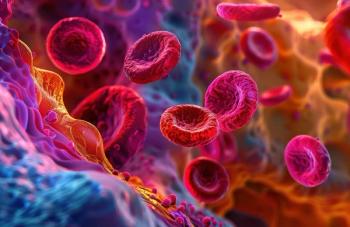
CVD Outcomes Linked to Youth Hypertension, Study Shows
Closer monitoring of youth hypertension could lessen the disease in adults, reducing overall costs and morbidity related to cardiovascular disease (CVD), new research shows.
Given that one of the most common causes of preventable death in adults around the world is
And that is no small group, they declared: It is estimated that 6% of all children have hypertension—and the percentage is growing.
"Few hypertensive youth have appropriate follow-up, are ever diagnosed, or are treated," the authors wrote. "There is a lack of consensus on the significance of pediatric hypertension and conflicting society recommendations for pediatric blood pressure screening and follow-up."
The investigators hoped to find evidence substantial enough to be impossible to ignore, with the aim of helping remedy the underdiagnosis and undertreatment of childhood hypertension. They began their retrospective population-based cohort study with a sizable group of almost 7 million: the entire child population aged 3 to 18 years alive in the province of Ontario, Canada, between 1996 and 2021. Only children with prior kidney replacements were excluded. Ultimately, the study included 25,605 youth diagnosed with hypertension and 128,025 matched controls.
Each child with hypertension was matched with 5 controls without hypertension by age, sex, birth weight, maternal gestational hypertension, prior comorbidities (chronic kidney disease, diabetes, cardiovascular surgery), and a propensity score for hypertension. The time to major adverse cardiac events (MACE), the primary outcome, was evaluated using the Kaplan-Meier method and Cox proportional hazards regression.
The median (IQR) age of the 25,605-child cohort with hypertension was 15 (11-17) years; 14,743 (57.6%) were male. Prior morbidities were uncommon, and after propensity score matching, baseline covariates were balanced.
At a median (IQR) follow-up of 13.6 (7.8-19.5) years, incidence of MACE was 4.6 per 1000 person-years in children with hypertension vs 2.2 per 1000 person-years in controls (HR, 2.1; 95% CI, 1.9-2.2). Youth with hypertension were at a 2- to 3-times higher associated risk of experiencing a stroke, being hospitalized for myocardial infarction or unstable angina, and congestive heart failure. The 2.1-times higher risk of MACE did not, however, extend to risk of CVD-related death in these children, the authors added.
These results dovetail with those of another recent study, which found that children and adolescents with high blood pressure above the 90th percentile were 1.4- to 1.8-times more likely to have subclinical cardiovascular disease (CVD).2 Those youth with subclinical CVD can easily become adults with subclinical CVD—such as left ventricular hypertrophy, higher carotid intima-media thickness, higher pulsewave velocity, atherosclerotic changes, retinal microvascular disease, and albuminuria—and they in turn are more likely to experience major CVD and death, the authors explained.
One reason that current pediatric guidelines provide conflicting recommendations for blood pressure surveillance among children is that there has been a lack of direct evidence linking youth hypertension to major CVD, the authors noted. The well-known association between hypertension and CVD in adults “cannot be directly extended to children because key CVD risk factors (eg, diabetes, smoking, and dyslipidemia) are more common in adults,” they wrote.
"Optimizing the care provided to youth with hypertension may help prevent long-term adult CVD, with substantial health and cost-saving benefits," the authors concluded. "Further research should confirm these findings among children with hypertension defined by standardized blood pressure criteria and evaluate CVD prevention strategies, including dietary modification, lifestyle interventions, and antihypertensive medications."
References
1. Robinson CH, Hussain J, Jeyakumar N, et al. Long-term cardiovascular outcomes in children and adolescents with hypertension. JAMA Pediatr. Published online May 6, 2024. doi:10.1001/jamapediatrics.2024.1543
2. Yang L, Magnussen CG, Yang L, Bovet P, Xi B. Elevated blood pressure in childhood or adolescence and cardiovascular outcomes in adulthood: a systematic review. Hypertension. 2020;75(4):948-955. doi:10.1161/HYPERTENSIONAHA.119.14168
Newsletter
Stay ahead of policy, cost, and value—subscribe to AJMC for expert insights at the intersection of clinical care and health economics.





























































